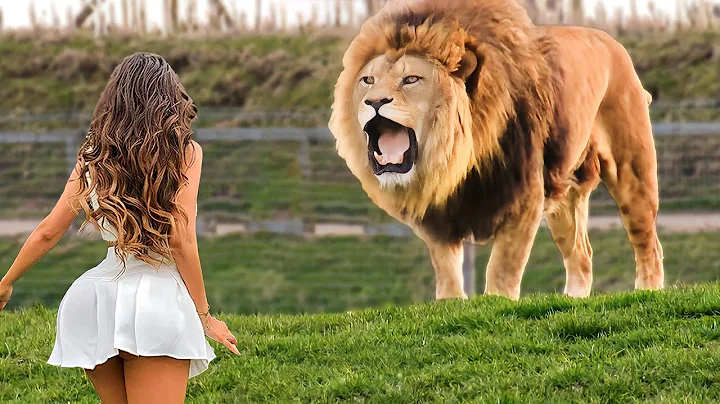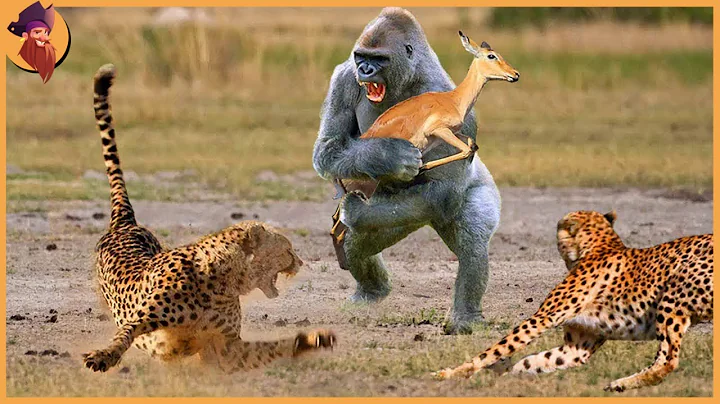
Animals are creatures that most of us are familiar with. After all, we humans are animals ourselves. Beyond that, we humans share this planet with a variety of other animals, we humans depend on animals, we humans learn from animals, and we humans even make friends with animals.
But, do you know what makes one organism an animal and another something else, such as a plant, a bacterium or a fungus? In the following 10-point description, you will find the basics about animals, and what they are. Different from other life forms on Earth.
01 The earliest animals appeared about 600 million years ago

The oldest evidence of life dates back to 3.8 billion years ago. The earliest fossils are ancient creatures called stromatolites. Stromatolites are not animals. It took 3.2 billion years for animals to appear.
The earliest animals appear in the fossil record in the late Precambrian period. The earliest animals were those of the Ediacaran biota, tube- and leaf-shaped creatures that lived between 635 million and 543 million years ago. The Ediacaran biota appears to have disappeared towards the end of the Precambrian.
02 Animals are dependent on other organisms for food and energy

Animals require energy in all aspects such as growth, development, movement, metabolism and reproduction. Unlike plants, animals cannot convert sunlight into energy on their own. Instead, animals are heterotrophs, meaning they cannot produce their own food and must obtain the carbon and energy they need to survive by ingesting plants and other organisms.
03 Animals are all mobile

Unlike plants that grow on a fixed substrate, most animals are motile for part or all of their life cycle. For many animals, the ability to move is obvious: fish can swim, birds can fly, mammals can jump, crawl, run, and swim.
But for some animals, this movement is subtle or limited to a short period of time in their lives. This animal is described as a sessile animal. For example, the sponge is fixedly attached for most of its life cycle, but their larval stage is a free-swimming animal. Additionally, research has shown that some species of sponges can move at very slow speeds (a few millimeters per day). Other examples of sessile animals that move only slightly include barnacles and corals.
04 All animals are Multicellular Eukaryotes

All animals have bodies made up of multiple cells, in other words, they are multicellular. In addition to being multicellular, animals are also eukaryotes, and their bodies are composed of eukaryotic cells . Eukaryotic cells are complex cells whose internal structures, such as the nucleus and various organelles , are wrapped in their own membranes.
DNA in eukaryotic cells is linear, it is organized into chromosomes. With the exception of sponges (the simplest animals), animal cells are organized into tissues with different functions. Animal tissues include connective tissue , muscle tissue, epithelial tissue and neural tissue .
05 Animals have diverged into millions of different species

Since first appearing 600 million years ago, animal evolution has produced an astonishing number and variety of life forms. As a result, animals have evolved many different forms and many ways of moving, getting food, and sensing their environment.
Throughout the course of animal evolution, the number of animal groups and species has increased and sometimes decreased. Today, scientists estimate that there are more than 3 million animal species in existence.
06 The Cambrian Explosion is a critical period for animals

The Cambrian Explosion (570 million to 530 million years ago) was a period of very rapid animal diversification. During the Cambrian explosion of life, early organisms evolved into many different, more complex forms. During this time, nearly all basic animal body shapes developed that still exist today.
07 sponge animal is the simplest animal

sponge is the simplest of all animals.Like other animals, sponges are multicellular, but that's where the similarities end. Sponges do not have special tissues found in other animals. The body of a sponge is made up of cells embedded in a matrix. Tiny spiny proteins called spicules are scattered throughout the matrix, forming the sponge's supporting structure.
Sponges have many small pores and channels distributed throughout their bodies that act as a filter-feeding system, allowing them to sift food from water flow. Early in animal evolution, sponges diverged from all other animal groups.
08 Most animals have nerve cells and muscle cells

Except for sponges, all animals have special cells called neurons. Neurons, also called nerve cells, send electrical signals to other cells. Neurons transmit and interpret a wide variety of information, such as the animal's health, movement, environment, and direction. In vertebrates, neurons are the building blocks of higher nervous systems, including the animal's sensory system, brain, spinal cord, and peripheral nerves.
The nervous system of invertebrates is composed of fewer neurons than that of vertebrates, but this does not mean that the nervous system of invertebrates is simple. The nervous system of invertebrates is very efficient and successful in solving the survival problems faced by these animals.
09 Most animals are symmetrical

Most animals are symmetrical except sponges. There are different forms of symmetry in different groups of animals. Radial symmetry, found in cnidarians (such as sea urchins) and certain species of sponges, is a symmetry that divides an animal's body into two similar halves using more than two planes that run the length of the animal's body.
Animals that exhibit radial symmetry are disk-like, tube-like, or bowl-like in structure. Echinoderms such as starfish exhibit a five-point radial symmetry, called five-way symmetry.
Bilateral symmetry is another type of symmetry found in many animals. Bilateral symmetry is a symmetry in which an animal's body can be divided along the sagittal plane (that is, the vertical plane extending from the head to the back, dividing the animal's body into left and right halves).
10 The blue whale is the largest living animal

The blue whale is a marine mammal that can weigh more than 200 tons and is the largest living animal. Other large animals include African elephants, Komodo dragons and giant squid.





















